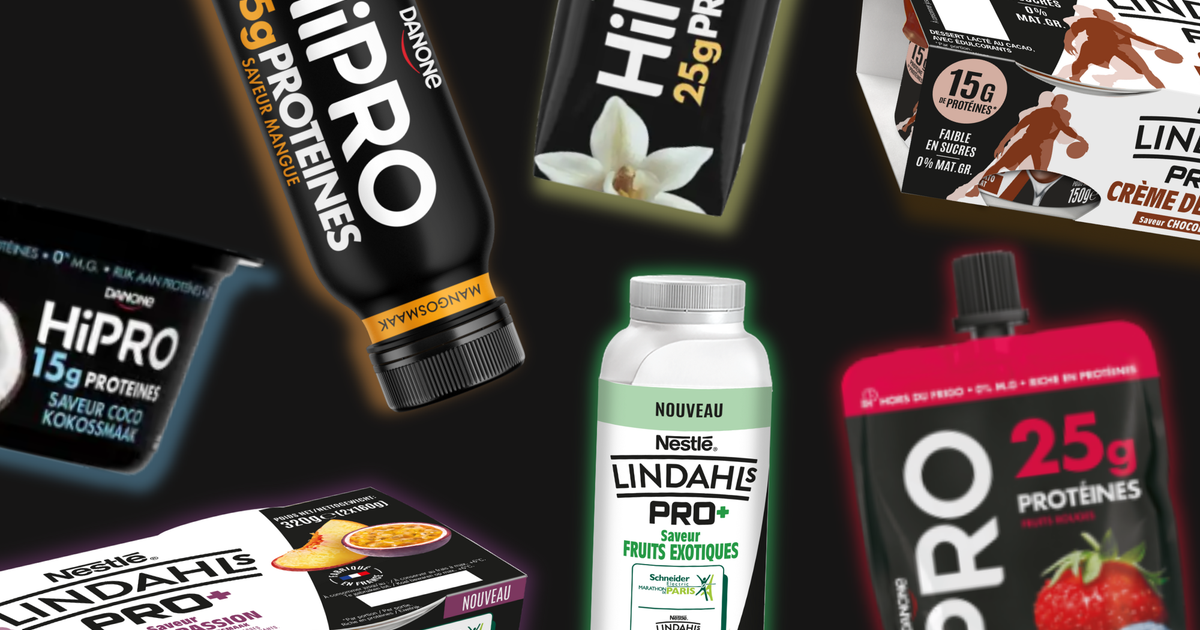After years of decline, cow's milk experienced renewed interest (+ 4.8%) in France during the 2020 confinements. Caught up since by price inflation and slow consumption, this former star of the small lunch continues on its merry way and always invites itself behind the stoves, to enrich cakes, flans, purées and bechamel sauces.
Only between whole, skimmed and semi-skimmed milk, which one to choose?
What are the nutritional and taste differences?
Should one be favored over another?
Answers with Marie-Caroline Michalski, INRAE research director, team leader in the CarMeN laboratory (Cardiovascular, Metabolism, Diabetology and Nutrition) at Inserm, and Philippe Legrand,
Read alsoAll that we reproach to cow's milk
A matter of cream
To better make the distinction, we must first examine their composition.
As researcher Marie-Caroline Michalski, specialist in dairy lipids, explains, whole milk is a water-based emulsion in which there are water-soluble compounds (lactose, proteins, vitamins, casein micelle), and microdroplets of suspended fat.
“Without action on our part, these will slowly rise to the surface to form a layer of cream.
To obtain skimmed milk, we will then accelerate this process using a centrifuge and then remove this upper layer,” explains the INRAE research director.
The semi-skimmed version, on the other hand, is skimmed milk in which a little cream is reintroduced to obtain half the fat than in whole milk.
Unsurprisingly, therefore, it is the cream content that determines the denomination of the white beverage, and therefore, its amount of fat.
Whole milk, recognizable by the red color of the cap of its bottle, contains 36 grams of lipids per litre, specifies Marie-Caroline Michalski.
Following this logic, the semi-skimmed with the blue cap, contains about half, or 15 grams per liter, and the skimmed with green shades, has none or very little.
"It's almost the only difference between these three liquids since the protein, carbohydrate and vitamin intakes - except those that are fat-soluble - remain the same", summarizes Philippe Legrand, director of the Human Nutrition Biochemistry laboratory at Agrocampus-Inserm in Rennes.
In video, the three rules of a healthy diet
A “good” dairy fat
Fats have long had a bad press, accused - among other things - of promoting the development of cardiovascular disease.
Moreover, who says fat also says caloric richness.
That of whole milk (65.4 kcal/100 g) then pushes some to turn away from it for lighter versions;
33.7 kcal/100 g for the so-called skimmed, and 47.3 kcal/100 g for the semi-skimmed.
Specialists, however, invite you to review our copy on the subject.
“We demonize a lot of dairy fat, in particular its saturated fatty acids, but these also have functions for the body, nuance Professor Philippe Legrand.
It is rather the excessive quantity consumed which is harmful, and which increases the risk of cardiovascular disease and type II diabetes.
Read alsoFor your good, eat fat for breakfast
Moving away from whole milk and semi-skimmed for these reasons would therefore be a bad idea, adds Marie-Caroline Michalski.
According to the researcher, the more milk retains its fat, the more it is synonymous with nutritional diversity, which is particularly beneficial for the metabolism of children.
“This dairy fat contains over 400 different varieties of fatty acids.
Some are transformed into energy, others have anti-inflammatory properties or even reduce the risk of insulin resistance and thus diabetes, she underlines.
It also contains a source of bioactive lipids that are useful for cholesterol metabolism and important fat-soluble vitamins such as vitamin D.”
On average, 2 dairy products per day
What about the taste according to the different versions?
If it all depends on consumer preferences, whole milk will have a stronger flavor.
“Lipids contain soluble flavors that give it a stronger, smoother flavor.
The more we remove the cream, the more we will tend towards something more neutral”, summarizes Philippe Legrand, director of the Biochemistry human nutrition laboratory at Agrocampus-Inserm in Rennes.
Specialists, on the other hand, urge moderation among heavy milk drinkers.
“Scientific research goes in the direction of food variety, reports Dr. Marie-Caroline Michalski.
Studies suggest consuming an average of 2 servings of dairy products per day for adults (3 to 4 for children and seniors), for example a glass of milk but also a yoghurt or a piece of cheese, rich in ferments and calcium."






